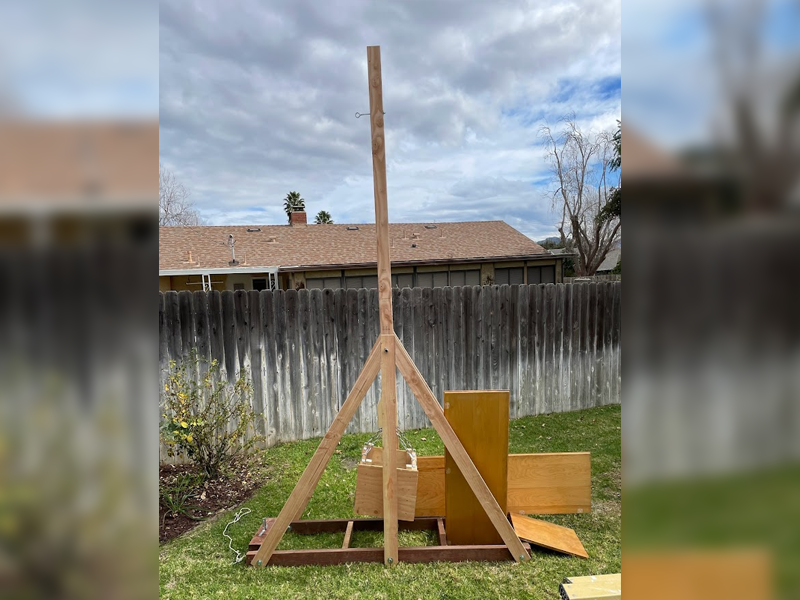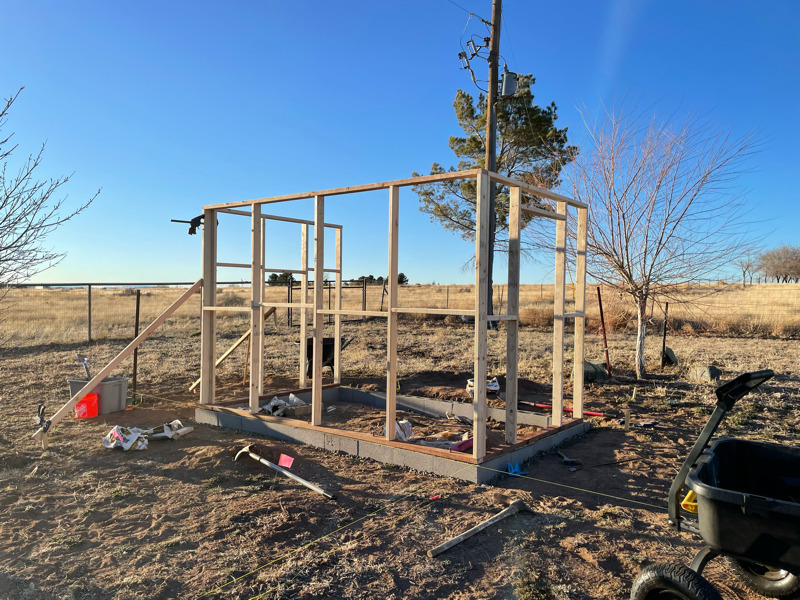8 Fun Ways to Teach Your Child Public Speaking Skills

There are few better ways to teach a child confidence than by teaching them public speaking. This is because there is a wide range of applications for public speaking skills:
-
Being a leader
-
Going on interviews
-
Teaching or coaching
-
Debating important points
-
Interviewing for a job
-
Giving speeches
No matter what career path your child chooses, chances are that they can get farther by learning and honing public speaking skills. These oral skills are also helpful in a less public setting, such as in conversations with friends and family members. If you want your kids to be a better communicator, public speaking will help get them there.
Are you looking for fun ways to teach your kids the art of public speaking? You’ve come to the right place!
Note: while most of the tips in this article are better suited to older children, we tried to include a couple of things that even younger kids could do - those being the last two tips of our article.
1. Watch TED Talks and Presentations
While it’s true that many people learn by doing, it’s smart to get an idea of how successful speakers talk. Your child can do this by watching TED talks, but it’s a good idea to watch other types of presentations, too.
TED talks have a specific style and formula that won’t always work in other types of presentations. For example, TED talks are always a specific length (18 minutes or less), require complete memorization of the material, and don’t include many visuals. This means they’re very different from an interactive presentation where they might present slides or field questions from audience members.
To give your kids a more well-rounded public speaking experience, have them watch several types of presentations.
Here are some questions you can ask along the way (or prepare ahead of their viewing session) to help your child know what to look for:
-
How did the speaker keep the crowd engaged?
-
Did you notice areas where they switched up their pacing?
-
Did you notice any changes of pitch / tone / volume? Where?
-
Did the speaker use body movement / hand gestures to illustrate their point?
-
Did the speaker use unique visuals or audio to enhance the presentation?
-
Did the speaker get the audience involved? How?
2. Start or Join a Speech or Debate Club
Speech and debate clubs are a fantastic way of developing public speaking skills. It’s also a great way for your child to meet others with the same goal - and hopefully, cheer one another on! If there’s not a speech or debate club in your area, consider starting one.
Here are some questions you can ask your child before or after a debate:
-
Did you make good use of the space available to you?
-
Did you take time to research the topic you’re speaking on?
-
Have you cut down on using “filler words” like “um,” “ah,” “like,” etc.?
-
Did you find yourself rambling? How can you be concise next time?
-
Were your responses logical and thought out?
-
Do your posture and stance exude confidence?
-
Have you incorporated emotion at key points?
-
Are you working on enunciation and diction?
3. Take a Toastmasters Course
While Toastmasters International is only for those over 18 years of age, they offer a Youth Leadership Program for school-age kids. This means that your child can take their eight-session program, which is run by local members of Toastmasters and follows a similar format.
They also offer an Interpersonal Communication program for teenagers, which is helpful if you also want to build your teen’s listening and communication skills.
If you’d like to learn more about either of these options, visit the Toastmasters International website.
3. Get Involved in Theater
Encourage your child to unleash their inner theater nerd by auditioning for their local or school theater group. Stage productions can help your kids express creativity, practice public speaking in a less intimidating way (acting as a character instead of having to show up as themselves), and they’re also a wonderful way to find new friends.
Here are some public speaking-related skills your kids will learn in theater:
-
The show must go on - a missed line or a prop in the wrong place won’t ruin everything. Just adapt and keep on going - most of the time, the audience won’t even notice!
-
Speak to the back of the theater - every drama teacher tells her students to “project!” This reminds kids that what they’re saying is important and to speak clearly and loudly.
-
Quiet backstage - this is respectful of other castmates involved in the production, and can easily be translated in public speaking terms to “the power of the pause.”
-
Focus - it’s fun to goof off with other castmates, but when it’s time to be serious, you settle down and listen because the show is the main priority.
-
Memorize your lines - part of focus is to memorize your lines. Even if you don’t have the exact lines in your head, you can compensate by giving the jist of them.
-
Be respectful - “Please” and “thank you” are always expected at the theater. Part of this is includes arriving early to all rehearsals, etc.
-
Vocal warm-ups - whether it’s “Bettie Botta bought some butter,” to develop one’s enunciation skills or a similarly silly-looking warm up (High School Musical is a good example), it’s critical to warm up your voice before a performance.
-
Don’t break character - from the moment you step on stage until the curtain call, you are the character you’re portraying. If something goes wrong, respond as the character.
Here are some bonus skills your kids could learn in theater (not speaking-related) that may not be utilized in other forms of public speaking:
-
Costume design - with permission from the costume designer, you can learn about costume design or add a new setting-appropriate element to your costume.
-
Sewing - again, if you want to be involved in other elements of the show, you can ask the costume designer to teach you to sew, then offer to help create the costumes.
-
Stage makeup - you could learn the basics of doing “stage makeup” to ensure your face isn’t washed out by the stage lights.
-
Dance / choreography - many shows require choreography: whether it’s knowing where to step onstage or learning full dance moves. It’s a fun skill to learn, and it translates well to public speaking as you learn to own your space and use gestures.
-
Music / singing - another element to many theater shows is music, so theater could help you foster an incredible love of music that carries you far.
-
Painting - backdrops constantly need to be painted, and you child can learn different painting techniques to make the backdrop look more realistic.
-
Finding props - if you’re an aspiring archeologist or avid shopper, you might love helping the propmaster find the props for the show.
4. Learn and Recite Monologues
Though monologues are commonly used in theater shows, we felt they deserved their own category. In a stage production, your teen may be in the supporting cast, but doesn’t afford them as much of an opportunity to practice and hone their acting chops. (And along with it, their public speaking abilities!)
Unlike a show where cast members cooperate, the entire monologue performance rides on the person giving it. This is closer to a public speaking engagement where one person stands on stage in front of a large audience, and no one else is up there with them.
Here are some special tips to help your teenager nail monologues:
-
Pick something that works with the role - if the monologue is for an audition, you should choose a monologue that matches the mood of the character.
-
Find a focal point - since there’s not another person acting, you’ll need to find a focal point to fix your gaze on while pretending to talk to the other character.
-
Include emotion - you should include variation and emotion in the piece to demonstrate your dynamic acting capabilities. Great speakers do this too!
-
Change the volume - since monologues are usually given in a more intimate setting, try lowering or raising the volume depending on the situation the character is in.
-
Settle your nerves - it’s nerve-wracking being the only one up there. You can translate that feeling to excitement to help energize you instead of allowing it to sabotage you.
-
Be confident and prepared - make sure you know the material inside and out so that you can give your best performance. Then, when doubt tries to creep in, remind yourself that you’ve prepared for this moment!
5. Start a YouTube Channel
At SkillTrek, we always recommend you take your own family’s needs and preferences into account. Some families prefer their kids have complete online privacy, and that’s OK! (We’ve got an alternate option to this below.)
But if you don’t mind your kids having a YouTube or TikTok channel, or want to create a family channel, this might be a great way to get them into public speaking - especially if your kid’s super creative.
Note: YouTube’s terms dictate that children under 13 aren’t permitted to create their own channels, and those between 13-17 are only permitted to do so with parental permission.
Some ideas of content that your teenager could include in their channel:
-
Video games - if you’re shy or don’t want to talk much, but love video games, this is a fairly low-pressure way to get started.
-
Skits - do you like teasing your family members about how they behave, or have you noticed specific behavior trends people do? Write a skit about it.
-
Cooking shows - love to make delicious meals? Create some original recipes or share your food experimentation ideas with more people.
-
Tutorials - show people how to do something that you’re great at - whether it’s bowling, creating PowerPoint presentations, dancing, etc.
-
Music, art, etc. - if you’re a creative person, do a time lapse of you creating an art piece. You could also show off a fiber arts piece or record an original song.
The key is for your child to find something they love to do, then record it. If they’ve got friends on YouTube too, they can hop on each others’ channels to show some support. Every now and then, encourage them to go back and review their old material to take notes on what they could have done better.
6. Record Public Speaking Videos for Family Members
Have family members who live far away? If your parents really miss their grandkids, what better way to help them feel close and in the loop than by recording special videos just for them?
This is a great option for people who don’t want their videos widely circulated on the internet: did you know that YouTube has a privacy setting where you can create a shareable link (and only those with the link can watch the video)? This enables you to show family members/friends how cute your kids are and how much they’ve grown, without worrying that anyone on the internet can access their videos.
Here are some ideas that could work for a video you could send of your kids for their grandparents.
Young kids (age 1-4)
-
Show off recent artwork, how tall they’ve grown, or their new favorite toys (even better if the new favorite toys were sent by Grandma and Grandpa).
-
Record a video of them listing off colors, reciting the alphabet, or singing a song they memorized.
-
Turn on the camera during reading time, and the questions and answers that follow. This helps grandparents feel more in the loop about what you’re teaching them.
A little older (age 5-12)
-
Have any fun family stories that have become legend? Let your kids re-enact them as the younger versions of people in your family.
-
Let your kids act out what the family pet(s) would be like if they were human. How do they sound? What do they say?
-
Document the adventures your kids have around town. Whether it’s a favorite gelato place or a nice theater you visited, vlog about it.
Teens/young adults (age 13-18)
-
Ask them to do a TikTok-style video of them showing a new favorite dance of theirs, lip-synching to a popular audio file, or doing a fun skit with their friends.
-
If grandparents are close, record a video of your kids asking if they need any help around the house, then showing projects they’ve completed at home.
-
Have them create a special “favorite memories of my grandparents” video and come up with what fun elements they’d like to include (captions, memes, GIFs, emojis, etc.)
7. Show and Tell
Show and tell is appropriate for kids as young as one year old and as old as high school. Of course, how show and tell is carried out will depend on the child’s age, but kids are always talking about something significant them.
Some teachers aren’t big fans of show and tell (or do away with specific items, like toys, altogether), but it doesn’t have to take place exclusively in a school setting. Kids might also do show and tell at church or at a large family gathering.
Here are some outside-the-box ways to do show and tell:
-
Journal read-aloud
-
Showing off artwork
-
Talking about a favorite book
-
Bringing something they made
-
Putting the item in a paper bag and letting others ask questions about it
-
Celebrating big events (losing teeth, celebrating birthdays, new siblings, etc.)
-
Sharing strategies for solving math problems
-
Showing and talking about school projects
Other Ways to Cultivate a Love of Public Speaking
There are ways to help your kids “get their feet wet” in the area of public speaking without throwing them into the deep end.
Here are some other ways to cultivate a love of public speaking:
-
Encourage kids to use public speaking techniques in conversations with friends. Ask them to be more aware of how much they’re using filler words in conversations, and encourage them to gesture to emphasize their point when telling stories.
-
Nudge them to talk to new people. Speaking to people that they’re unfamiliar with will be the next level up from talking with friends. Encourage them to ask questions to draw a response from the person they want to get to know, then share relevant stories.
-
Lean into stories. As you may have noticed, we’re talking a lot about stories now. Storytelling feels less intimidating than “public speaking,” but many of the elements are the same. Finding the right story for the audience is a crucial part of speaking.
-
Lead meetings. Are there any meetings that your child could lead, in order to get used to public speaking in a smaller setting? If there’s a group of people they feel very comfortable with, that’s the perfect opportunity.
-
Take the sting out of potential “failure.” People tend to fear public speaking, but what’s the worst that can happen? Being laughed at isn’t the end of the world, and it’s also not very likely in many circumstances.
Tools to Help Kids Learn Public Speaking
Age-appropriate tools can help kids become better at public speaking. Here are a few ideas, broken up by age group.
Young kids (age 0-5)
Here are some ways to get young kids used to speaking:
-
Storytelling time. If they’re reading a story aloud, memorizing/summarizing a story, or sharing their own made-up story, taking turns telling a story is a great way to learn.
-
Puppets. Let your child use puppets to tell their story. Focusing on the puppet helps take the focus away from nervousness, and gives them a fun task to do.
-
Props. Ask them to find clever props to help them tell the story (or find some for them, if they’re younger). Using props can bring the story to life for your kid.
A little older (age 4-7)
Here are some ways to help primary school-aged kids get used to speaking:
-
Improv. Teach kids what improvisation means and give them a few rules as a guideline. (Think: a clean version of “Who’s Line is It, Anyway?”)
-
Body language guessing game. Demonstrate different types of body language and what they mean, then have your student take a turn providing examples of how to “speak without speaking” and see if other students (or you) can guess them!
-
Storytelling game. One game to try is “Alternative ending,” where the student is tasked with coming up with a different ending to a popular book or movie.
Preteen/teenager (age 11-18)
In secondary school, there are even more chances to hone public speaking skills:
-
Presentation software. Whether they learn PowerPoint or Google Slides, knowing how to put together a presentation is a public speaking skill that can carry them into adulthood. Google Slides has pre-made templates that are a lot of fun! (Pro tip: remind them not to put everything they’re going to say on the slides, but use the slides as an outline for the discussion.)
-
Leadership positions. Being part of the student body or heading up a club or other organization are optimal ways preteens and teenagers can appreciate the value of public speaking. The best leaders are also great listeners, so encourage them to do their research before they speak on behalf of their peers.
-
Video equipment. Here are some good starter pieces for a video channel: a phone, a good mic, lighting (like a ring light, etc.), and video editing software (CapCut is free and pretty good, and there’s also AI editing software like Descript).
Public Speaking Doesn’t Have to Be Scary
It takes time to master public speaking - and each student will need to learn the skill in age-appropriate ways. If you’ve got a teenager and want them to learn how to speak in front of a crowd, we’ve got a resource for you!
Not a SkillTrek member yet? Check out our plans page! (If you live in Arizona, Idaho, Iowa, or Missouri, you can use ESA funds to pay for your membership, too.)




